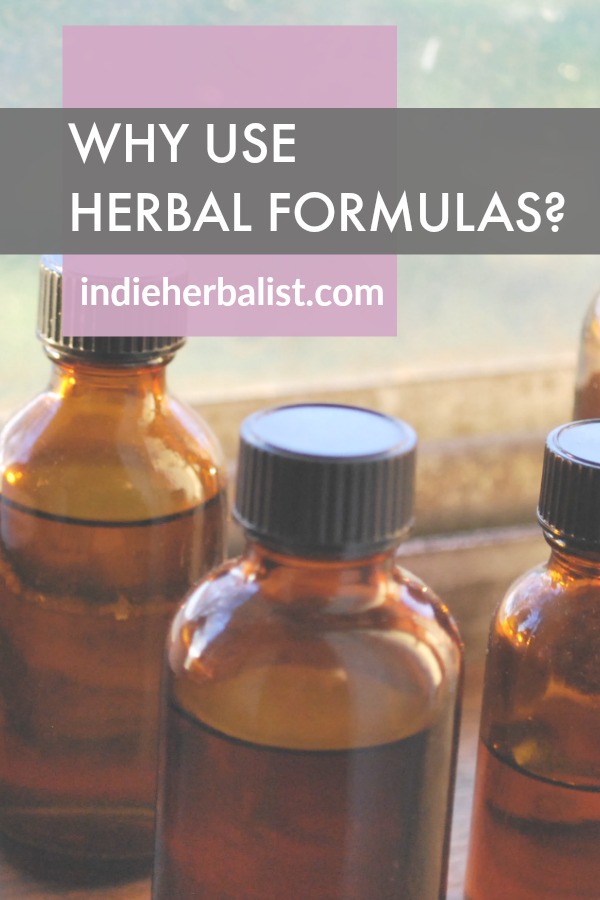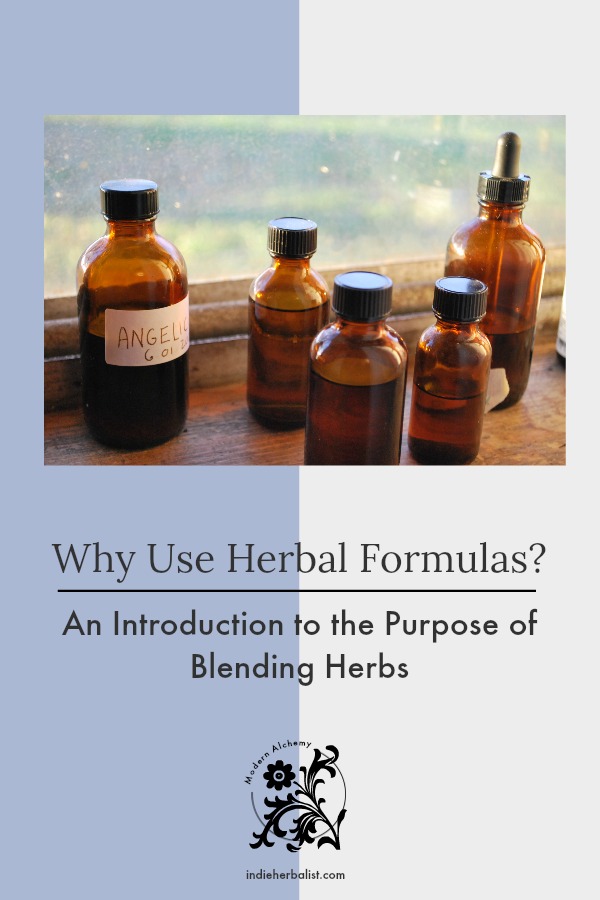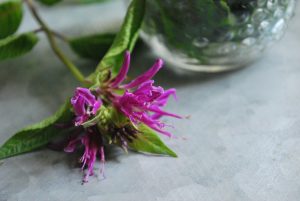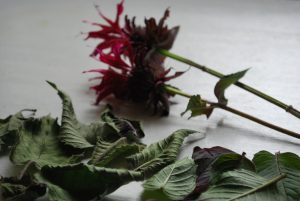Links contained in this post and elsewhere on my website may include affiliate links. When you make a purchase through these links, I earn a commission at no additional cost to you. I only link to products and services that I love - and that I think you will love, too!
Herbal formulas are mixtures of multiple herbs designed with a focused goal. Herbalists create them for convenience, synergy, and flexibility. Sometimes herbal formulas are also known as herbal blends or herbal compounds.
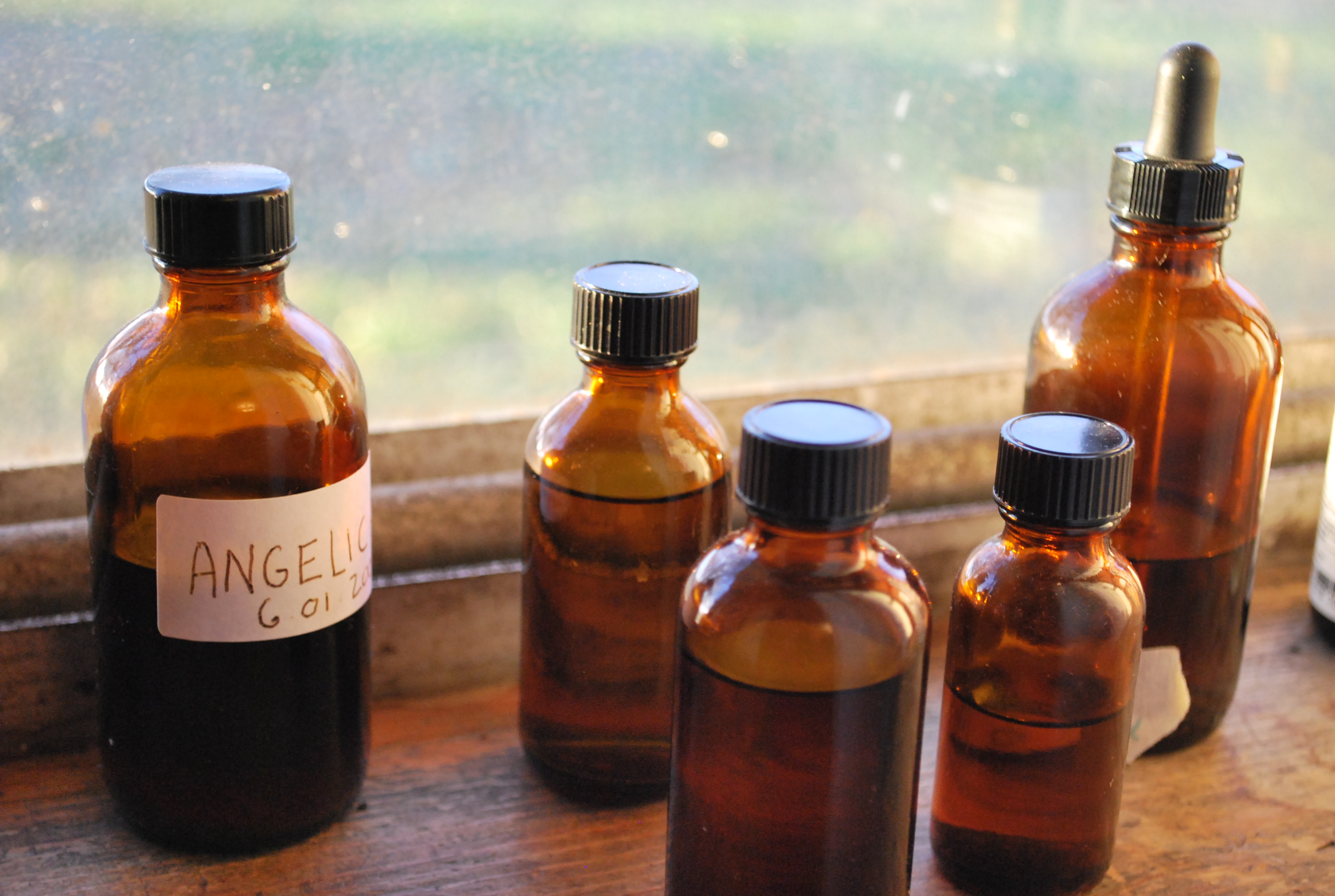
What are herbal formulas?
Herbal extracts can be used one at a time, which is known as simpling. There is nothing wrong with this approach – in fact, it’s the approach I typically use. It’s easy and quick, and works especially well with the adaptogens and nervines I like using on a daily basis. Otherwise, I generally use single herbs by matching them as closely as possible to their specific indications.
An herbal formula, on the other hand, is an intentionally blended recipe of extracts or dried herbs. The recipe is created with a goal in mind, and herbs are selected based on their ability to work synergistically.
Determining the Purpose of a Formula
To make a successful herbal blend, it’s important to keep the focus of your recipe narrow. For acute imbalance, this typically isn’t difficult. Let’s say you are creating a formula to assist with recovering from a urinary tract infection- that’s very straight forward. It would be easy to think of three or four herbs to support the urinary tract as demulcents, diuretics, and antispasmodics.
If you are recuperating from the flu, however, you might not know where to begin. You are achy and in pain, your lungs feel boggy, and you’re running a fever. So where do you start? There are several different body systems involved!
In that case, it will be easier to create several formulas. A formula each for respiratory support, nervous system support for pain, and herbal diaphoretics to help you sweat out the fever makes much more sense than a single formula.
By breaking it down into more specific formulas, you will also have the flexibility to mix and match in other scenarios. For instance, you could use the nervous system support blend the next time you have a headache.
Parts of an Herbal Formula
Although I have seen Western herbalists combine formulas based on all the herbs having similar actions, I feel that this is one of the less nuanced approaches. Instead, I use an approach that’s common in Traditional Chinese Medicine.
In TCM, it’s common to choose one herb as the main ingredient for a formula. Then, two or three herbs are selected based on their ability to complement the main herb. Finally, a catalyst or synergistic herb may be used. A catalyst herb, such as cayenne or prickly ash, helps deliver the formula by providing support to the metabolism or the circulation. A synergistic herb helps the other ingredient work more effectively together. Licorice is an example of an herbal synergist.
Why Use an Herbal Formula?
Using simples or using formulas is a matter of personal preference. However, flexibility, convenience, and synergy are good reasons to use formulas.
Versatility
Using herbal formulas can provide a nice degree of versatility for the home herbalist. This is especially true of formulas you create yourself. You can customize the formula based on herbs that resonate well with you and your specific situation. Creating general-purpose formulas that can be combined as needed is another example of how versatile they can be.
Convenience
I often use single herbs, but I find that it’s nice to have a few herbal formulas on hand as well. When I’m sick, I don’t feel like taking the time to think through a new formula or mix one up. It’s nice to have them made ahead and ready to go!
Synergy
Blending more than one herb allows the herbalist to customize how the blend is likely to work. It’s like playing one note on a piano compared to playing a chord. Depending on the notes you select, the “mood” – the effect the chord has on the listener- changes. Most herbs have more than one category of use. Combining them in formulas can provide more context for how your body responds to them and puts them to use.
About Agatha
I’m an herbalist and author in Atlanta, Georgia. My popular herbal recipe book is available from Amazon, Barnes and Noble, or by request at your favorite book shop! Learn more about my book, The Complete Guide to Adaptogens.
Pin this post for later? Use the image below to save this article for later!
